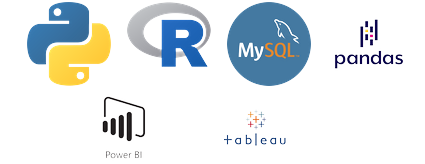Here’s a comprehensive syllabus for an advanced Excel course, structured to cater to intermediate and advanced users. The syllabus is divided into modules, each focusing on different aspects of Excel, including data analysis, automation, and advanced functions.
Module 1: Advanced Excel Functions and Formulas
Topics:
- Array formulas and dynamic arrays
- Advanced lookup functions: INDEX, MATCH, XLOOKUP
- Logical functions: IF, IFS, AND, OR, SWITCH
- Text functions: TEXTJOIN, CONCAT, LEFT, RIGHT, MID
- Date and time functions: EDATE, EOMONTH, NETWORKDAYS, WORKDAY
Learning Objectives:
- Master complex formulas and functions
- Use advanced lookup methods for efficient data retrieval
- Manipulate text, dates, and arrays with advanced functions
Practical Exercises:
- Create and use array formulas for dynamic calculations
- Implement advanced lookup functions in data retrieval scenarios
- Utilize logical functions to create complex conditional statements
- Apply text and date functions to transform and manipulate data
Module 2: Data Analysis and Visualization
Topics:
- PivotTables and PivotCharts
- Advanced charting techniques
- Conditional formatting with formulas
- Data validation with advanced criteria
- Using slicers and timelines
Learning Objectives:
- Analyze large datasets using PivotTables
- Create sophisticated charts and graphs
- Apply conditional formatting for data visualization
- Implement advanced data validation techniques
Practical Exercises:
- Build and customize PivotTables and PivotCharts
- Create dynamic charts with advanced charting techniques
- Use conditional formatting to highlight key data points
- Set up advanced data validation rules
Module 3: Data Modeling and Power Query
Topics:
- Introduction to Power Query
- Data transformation and cleansing in Power Query
- Merging and appending data
- Creating custom functions in Power Query
- Loading data into Power Pivot
Learning Objectives:
- Transform and clean data using Power Query
- Combine multiple datasets through merging and appending
- Create and use custom functions for advanced data manipulation
- Integrate Power Query data into Power Pivot for data modeling
Practical Exercises:
- Import and transform a dataset using Power Query
- Merge and append data from different sources
- Write and apply custom functions in Power Query
- Load transformed data into Power Pivot and create a data model
Module 4: Advanced Data Analysis with Power Pivot and DAX
Topics:
- Introduction to Power Pivot
- Creating and managing data models
- DAX (Data Analysis Expressions) fundamentals
- Advanced DAX functions: CALCULATE, FILTER, ALL, RELATED
- Creating complex measures and calculated columns
Learning Objectives:
- Build and manage data models in Power Pivot
- Understand and apply DAX for advanced data analysis
- Create sophisticated measures and calculated columns using DAX
Practical Exercises:
- Create a data model in Power Pivot
- Write basic and advanced DAX formulas
- Implement complex measures and calculated columns in a data model
Module 5: Automation with Macros and VBA
Topics:
- Introduction to macros and VBA
- Recording and editing macros
- VBA programming fundamentals
- Automating repetitive tasks with VBA
- Creating custom functions and add-ins
Learning Objectives:
- Automate tasks using macros and VBA
- Write basic VBA scripts for custom automation
- Create custom functions to extend Excel’s capabilities
Practical Exercises:
- Record and edit a macro to automate a task
- Write a VBA script to automate data processing
- Create and use a custom function in Excel
Module 6: Advanced Data Management Techniques
Topics:
- Working with external data sources
- Using Excel as a database: ADO and SQL
- Advanced filtering and sorting techniques
- Handling large datasets efficiently
- Using Excel with other Office applications (Word, Access, Outlook)
Learning Objectives:
- Integrate Excel with external data sources
- Use SQL queries within Excel for advanced data management
- Apply advanced filtering and sorting to manage large datasets
- Integrate and automate workflows with other Office applications
Practical Exercises:
- Connect to an external database and import data
- Use SQL queries to manipulate data within Excel
- Implement advanced filtering and sorting on a large dataset
- Create an automated workflow involving Excel and Outlook
Module 7: Collaboration and Security
Topics:
- Sharing and protecting workbooks
- Track changes and version history
- Using Excel in a collaborative environment (OneDrive, SharePoint)
- Workbook and worksheet protection techniques
- Data encryption and access control
Learning Objectives:
- Share and collaborate on Excel workbooks securely
- Track changes and manage version history
- Protect sensitive data within workbooks
Practical Exercises:
- Share an Excel workbook using OneDrive or SharePoint
- Enable and manage track changes and version history
- Apply workbook and worksheet protection
- Encrypt a workbook and manage access permissions
Module 8: Review, Case Studies, and Project Work
Topics:
- Review of key concepts and advanced techniques
- Real-world case studies
- End-to-end project: From data import to reporting and automation
Learning Objectives:
- Reinforce learning through review and practical application
- Apply advanced Excel skills to real-world scenarios
- Complete an end-to-end project demonstrating course concepts
Practical Exercises:
- Participate in a review quiz covering all modules
- Work on case studies provided by the instructor
- Complete a capstone project involving data analysis, visualization, and automation
Module 9: Q&A and Feedback
Topics:
- Open Q&A session for addressing queries
- Course feedback and evaluation
- Discussion on further learning resources and next steps
Learning Objectives:
- Clarify any remaining questions
- Provide feedback for course improvement
- Identify resources for continued learning
Practical Exercises:
- Engage in a Q&A session with the instructor
- Provide detailed feedback on the course
- Explore recommended resources for further Excel learning

